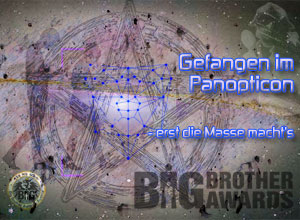

|
search / subscribe / upload / contact |
|
|
||
|
|
||
|
|
||
|
|
||
|
|
||
|
|
||
|
|
||
|
|
||
| RSS-Feed Depeschen | ||

|
||
Date: 1998-10-04
Glasfaser: Bermudas erobern Europa-.-. --.- -.-. --.- -.-. --.- -.-. --.- -.-. --.- -.-. --.- "Carrier der Carrier" die Welt zu erobern. Nach Überquerung von Atlantik & Pazifik ist seit 1. Oktober Europa dran. 700 Millionen Dollar wird die 10 Mbit/sec Glasfaser/anbindung von 13 europäischen Städten (siehe unten) kosten, München & Wien sind in der ersten Ausbaustufe nicht dabei. -.-.- --.- -.-.- --.- -.-.- --.- Hamilton, Bermuda - October 1, 1998 - Global Crossing (Nasdaq: GBLX), the first independent provider of world-wide fiber optic telecommunications networks, today announced Pan European Crossing, a fiber optic network directly linking 18 European cities with the United States, Asia and Latin America. The Company plans to begin construction in October 1998, with network operation commencing in the fourth quarter 1999. Pan European Crossing will extend the company's high-capacity, undersea global network to major European commercial centers, meeting the growing demand for global Internet and communications connectivity. Global Crossing will manage Pan European Crossing as an integrated part of its global network from its Bermuda-based network operations center providing 24-hour service. "Pan European Crossing will offer telecommunications carriers the best of both worlds - seamless worldwide service, and on-demand state-of-the-art capacity without up front capital investment," said Global Crossing Chief Executive Officer Jack Scanlon. "Our customers are witnessing dramatic increases in Internet, E-Commerce and related demand. Global Crossing is ready to support them by offering reliable communications capacity at significantly lower prices." Pan European Crossing will interconnect 18 key cities, including London, Amsterdam and Frankfurt, with the company's Atlantic Crossing (AC-1) system that provides connectivity to the United States. AC-1, which went into commercial service in May 1998, links Pan European Crossing to the rest of Global Crossing network. This is in conjunction with Global Crossing's other networks-Pacific Crossing (PC-1) connecting the U.S. and Japan; Mid-Atlantic Crossing (MAC) connecting the eastern U.S., Bermuda, and the Caribbean; and Pan-American Crossing (PAC) connecting the western U.S., Central America, and the Caribbean. "Pan European Crossing, along with other fiber optic systems being constructed by Global Crossing, will comprise the first independent, high capacity fiber optic network to serve as a global platform, which its customers-telecom operators and Internet Service Providers-can utilize to meet their explosive demand for increased capacity. This is another major step towards our goal of interconnecting the top 100 cities for telecommunications traffic in the world," said Scanlon. Pan European Crossing capitalizes on the opportunities created by the deregulation of Europe's telecommunications markets and will require an investment of up to $700 million to complete the network. Pan European Crossing will be developed in several phases, initially providing connectivity between 13 cities: London, Paris, Amsterdam, Rotterdam, Antwerp, Brussels, Hamburg, Hanover, Dusseldorf, Cologne, Frankfurt, Strasbourg, and Copenhagen. Planned extensions to the network will connect Lyon, Marseilles, Turin, Milan, and Zurich, and will be completed in 2000. The Company has future plans to connect Rome, Barcelona, Madrid, Berlin, Munich, Stuttgart, and Vienna. Global Crossing also has projects underway to construct undersea optical fiber communication systems interconnecting Asia and Latin America to the U.S. and Europe. Pan European Crossing will use the latest SDH and DWDM technologies from leading suppliers to provide ultra high capacity, self-healing fiber networks to connect the major commercial centers of Europe with the world, representing a terrestrial network of approximately 7,200 route kilometers, and 500,000 fiber kilometers. Based on fibers per kilometer, Pan European Crossing is by far the highest capacity independent European network ever announced. Capacity on the network will be marketed on a "carriers' carrier" basis to telecom operators, such as national carriers and emerging telecom providers, as well as Internet Service Providers. Pan European Crossing will be composed of multiple network rings, which will provide diverse routing options and restoration or redundancies among all the points of presence on the network. Global Crossing is the world's leading independent developer, owner and operator of open-access fiber optic telecommunications networks. The Company has its operations center based in Hamilton, Bermuda and holding Company headquarters in Los Angeles, with offices in Morristown, New Jersey; San Francisco; Miami; London; Amsterdam; and Buenos Aires. http://www.globalcrossing.bm/news-center.html#sept9 related story http://www.infoworld.com/cgi-bin/displayStory.pl?98101.encrossing.htm -.-.- --.- -.-.- --.- -.-.- --.- q/depesche is powered by http://www.netsphere.at handicrafters of fine mailing-lists and more -.-.- --.- -.-.- --.- -.-.- --.- - -.-. --.- -.-. --.- -.-. --.- -.-. --.- -.-. --.- -.-. --.- edited by Harkank published on: 1998-10-04 comments to office@quintessenz.at subscribe Newsletter - -.-. --.- -.-. --.- -.-. --.- -.-. --.- -.-. --.- -.-. --.- |
|
|
|
| CURRENTLY RUNNING | |
q/Talk 1.Juli: The Danger of Software Users Don't Control

|
|
| !WATCH OUT! | |
bits4free 14.Juli 2011: OpenStreetMap Erfinder Steve Coast live in Wien

|
|

